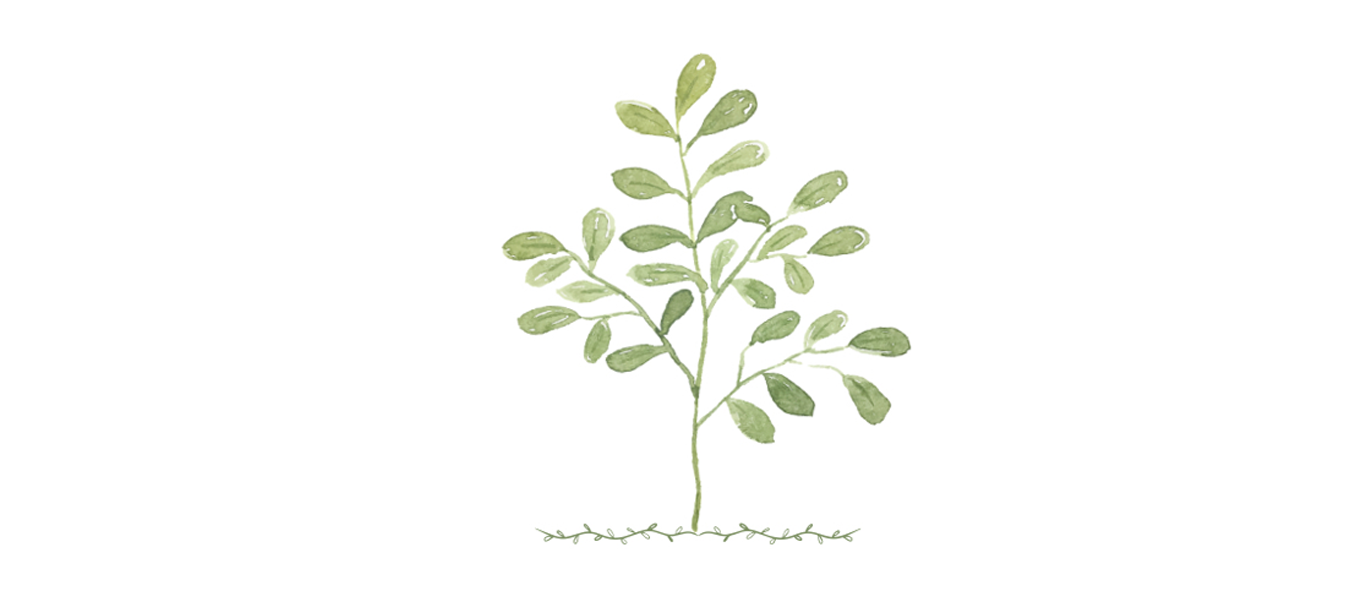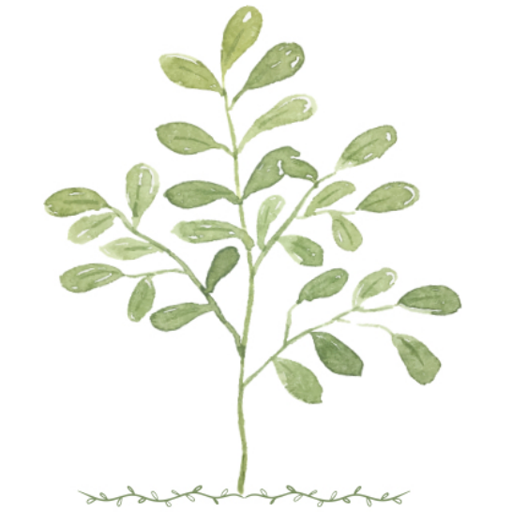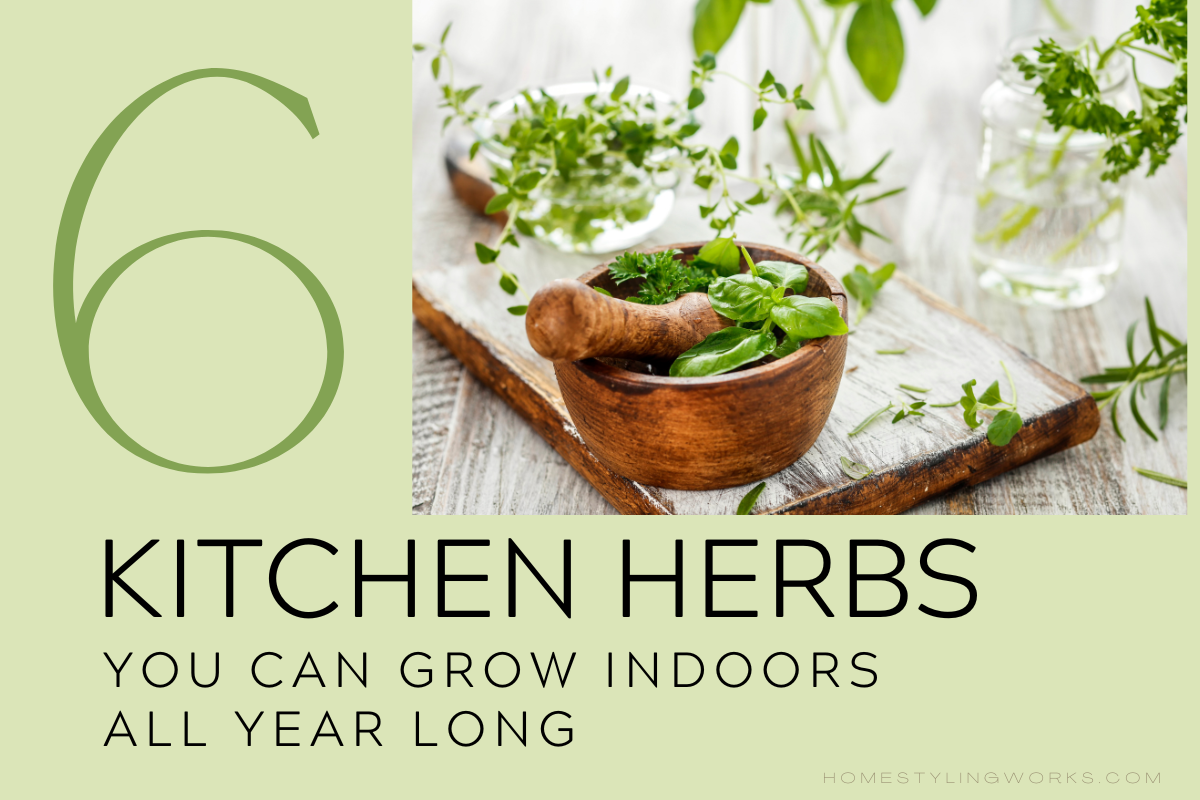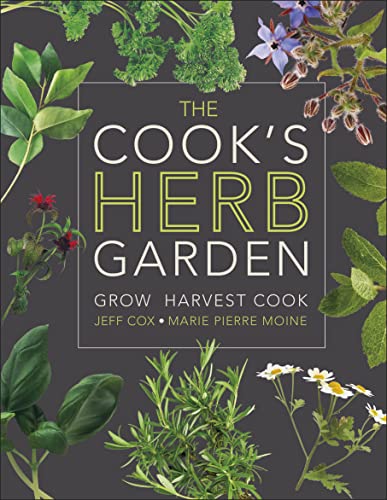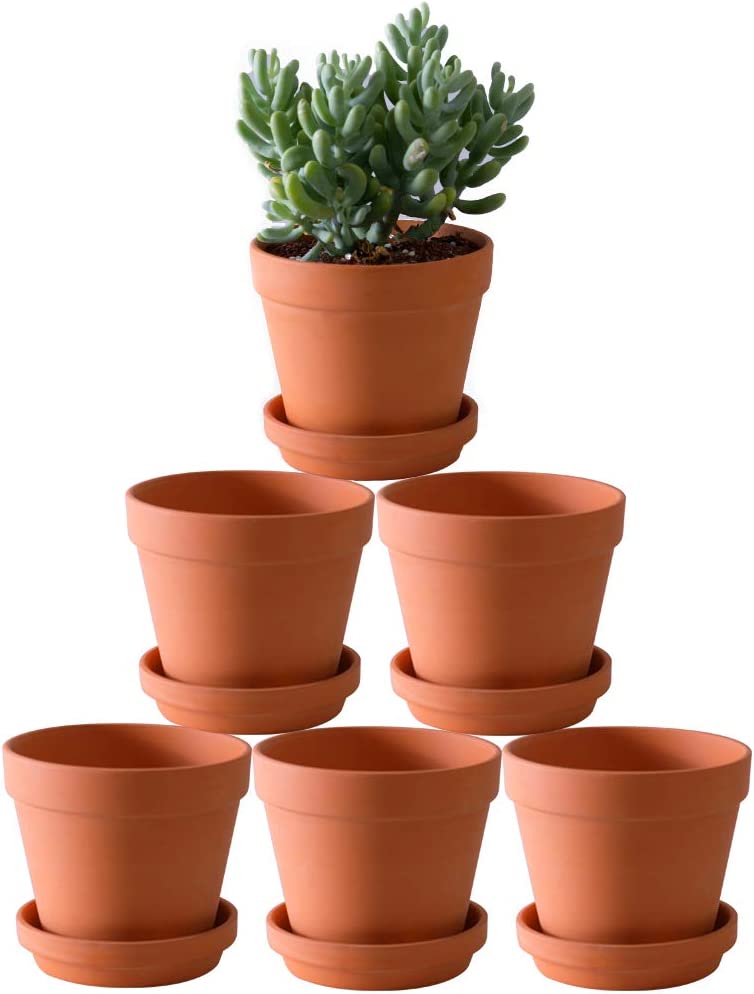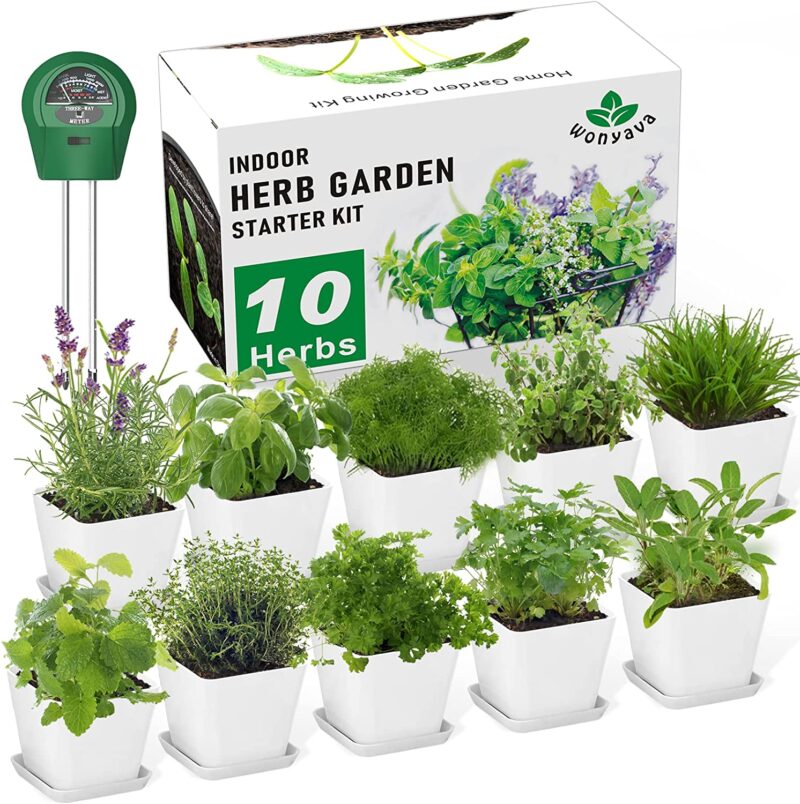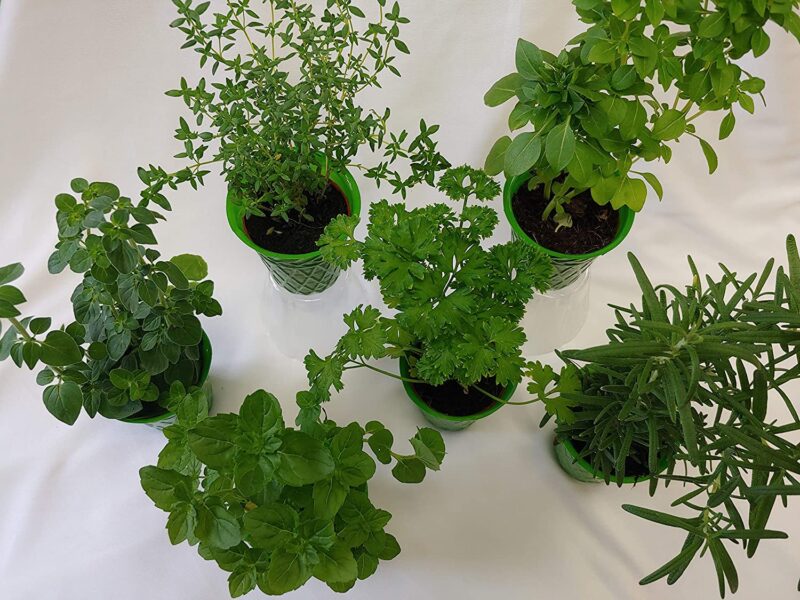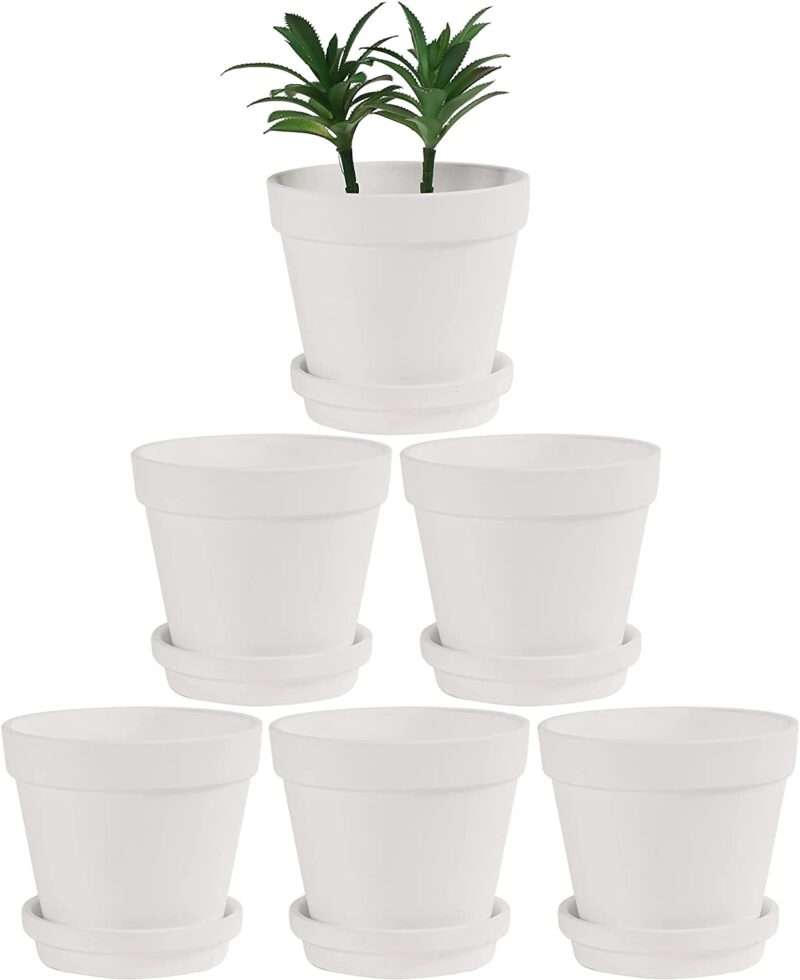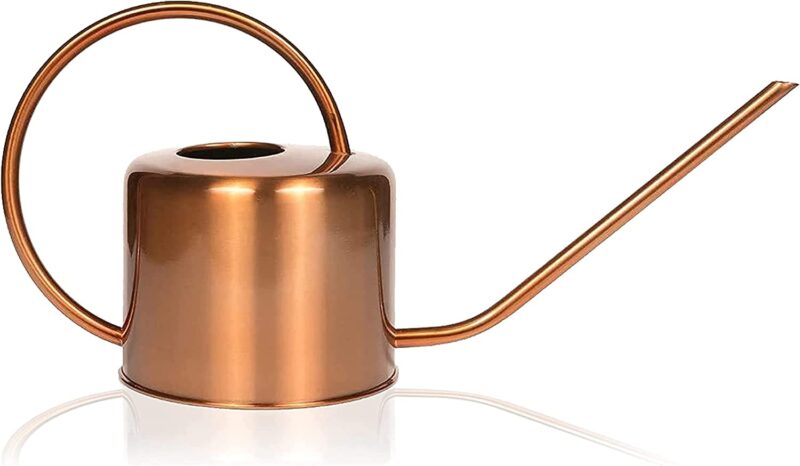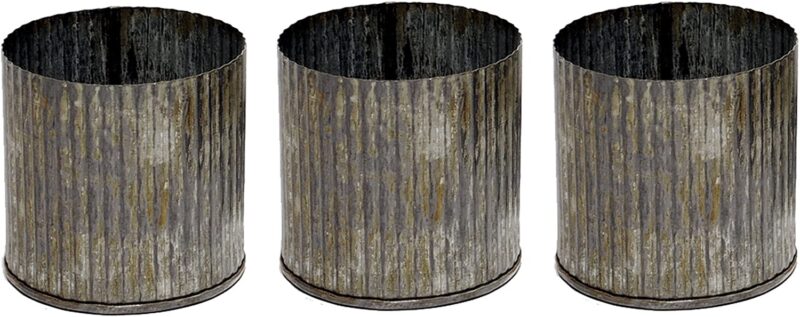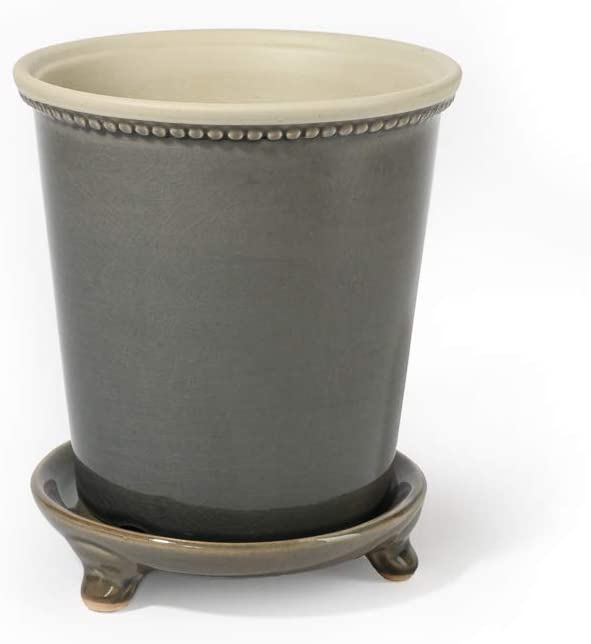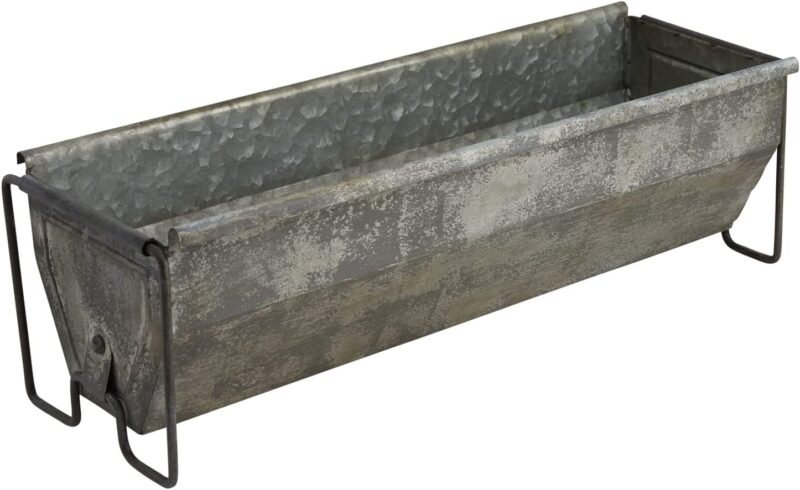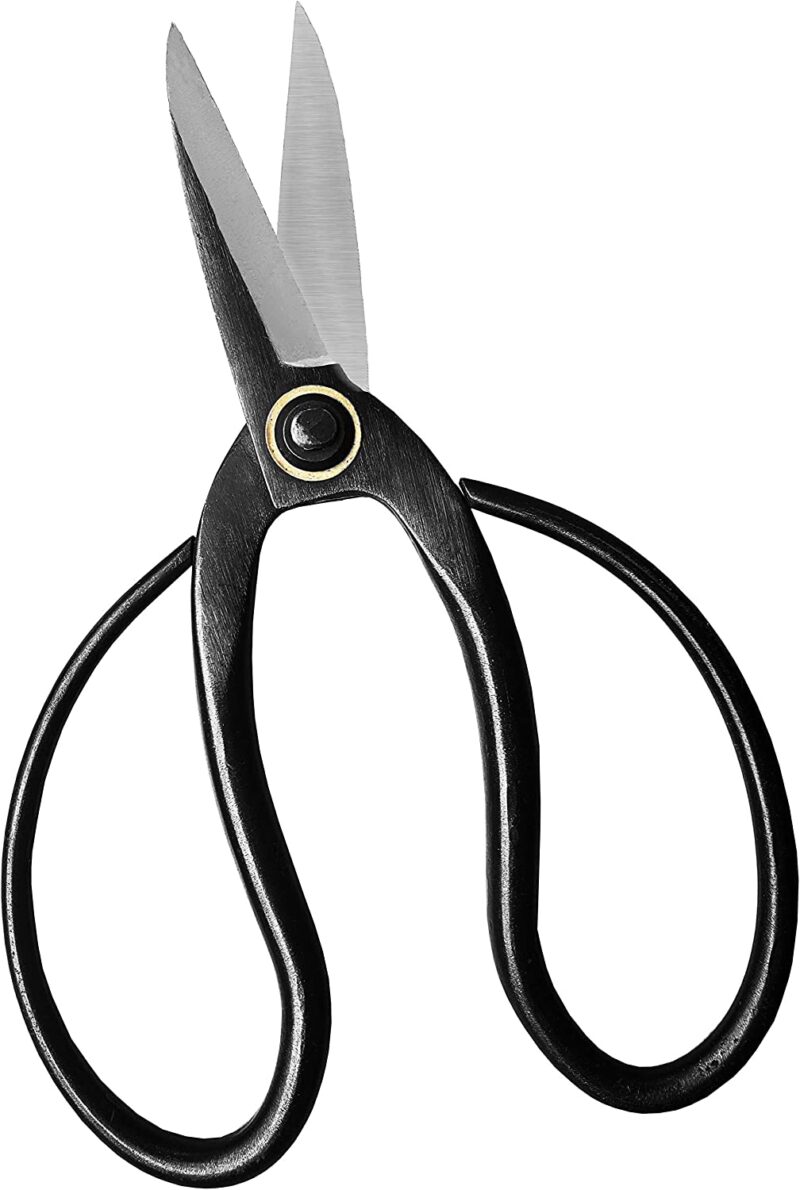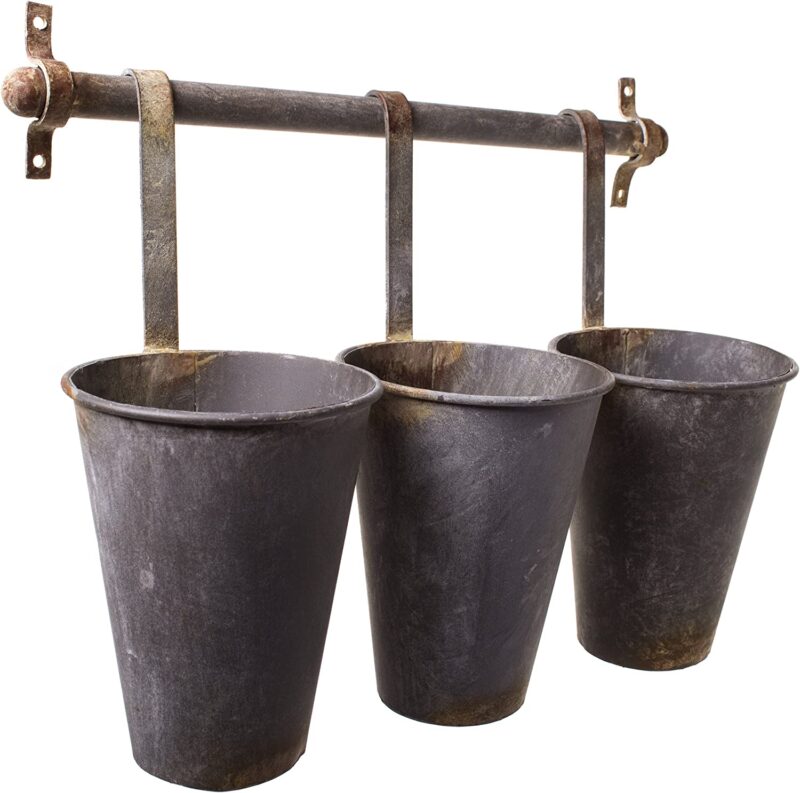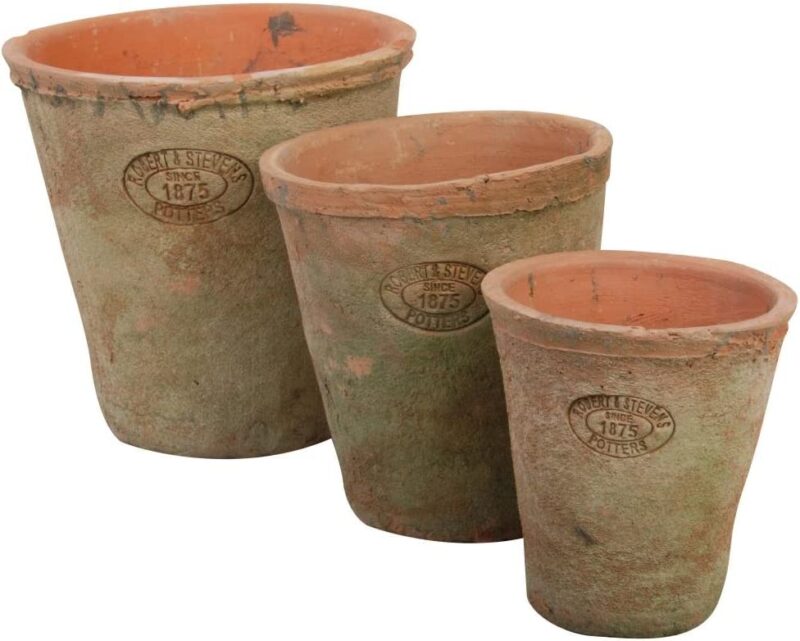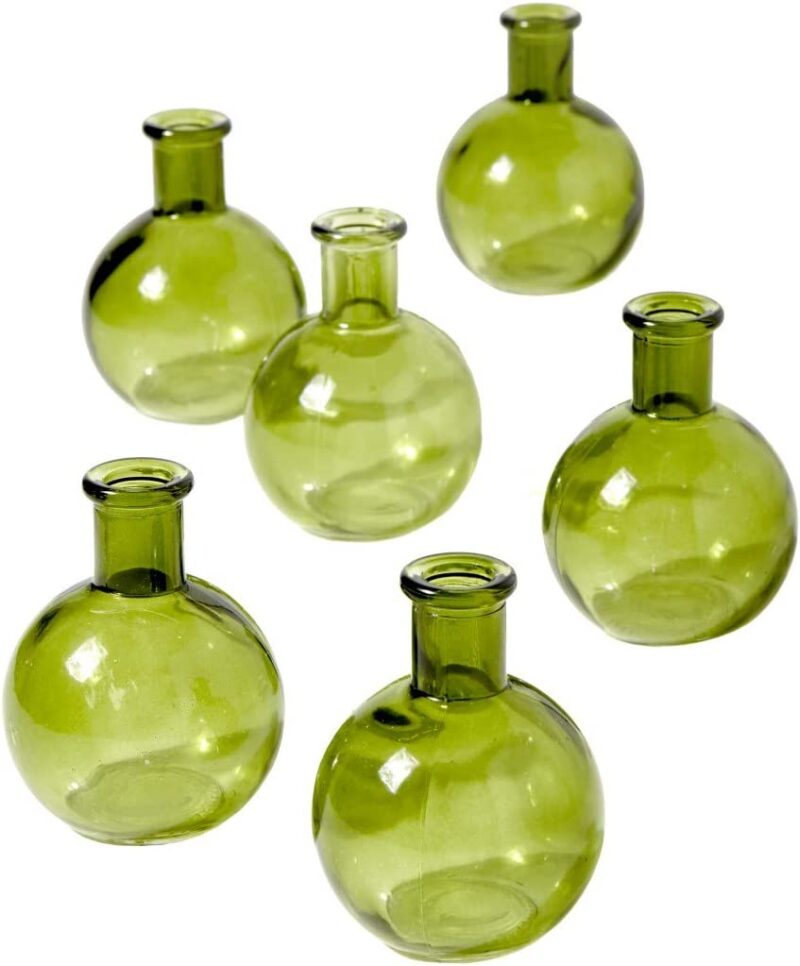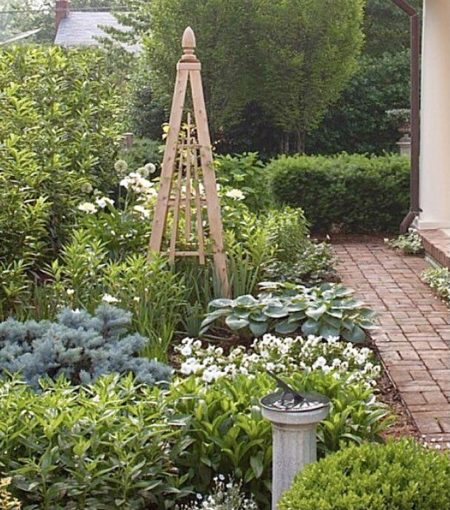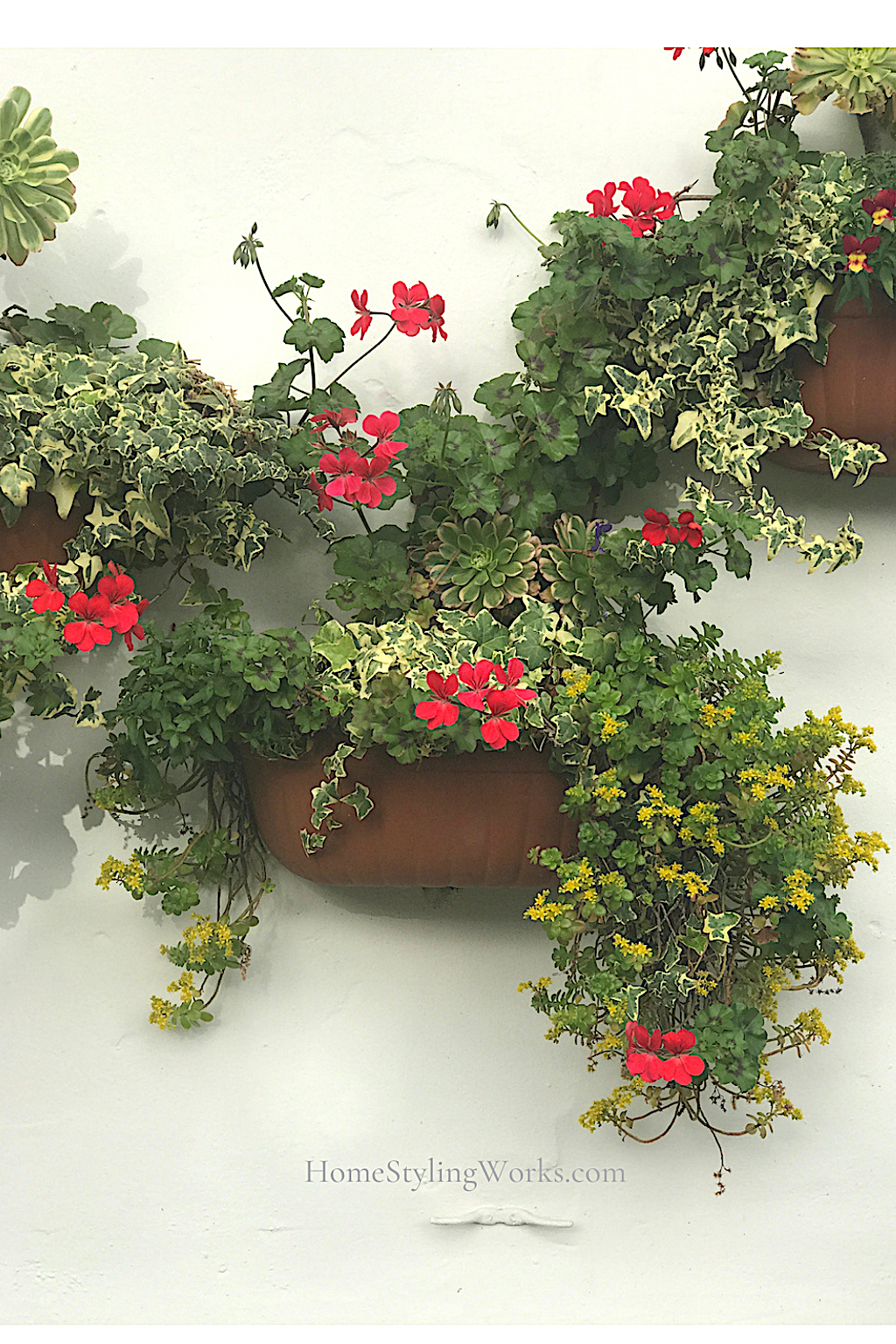If you asked me to name one thing that has the power to elevate your kitchen/cooking skills, I would say it’s learning how to incorporate fresh herbs into your repertoire. Fresh herbs, not dried. In fact, the only dried herb I use regularly is Sicilian oregano. Otherwise, most herbs are best freshly-clipped from the garden. But you don’t need to have a plot of land, or even a back yard, to regularly harvest fresh herbs for cooking.
the indoor herb garden
To grow herbs, you just need a sunny window. For display, you can either place a herb plant grouping on the counter or on the window sill (you can even mix in a couple of lettuce plants, as shown below).
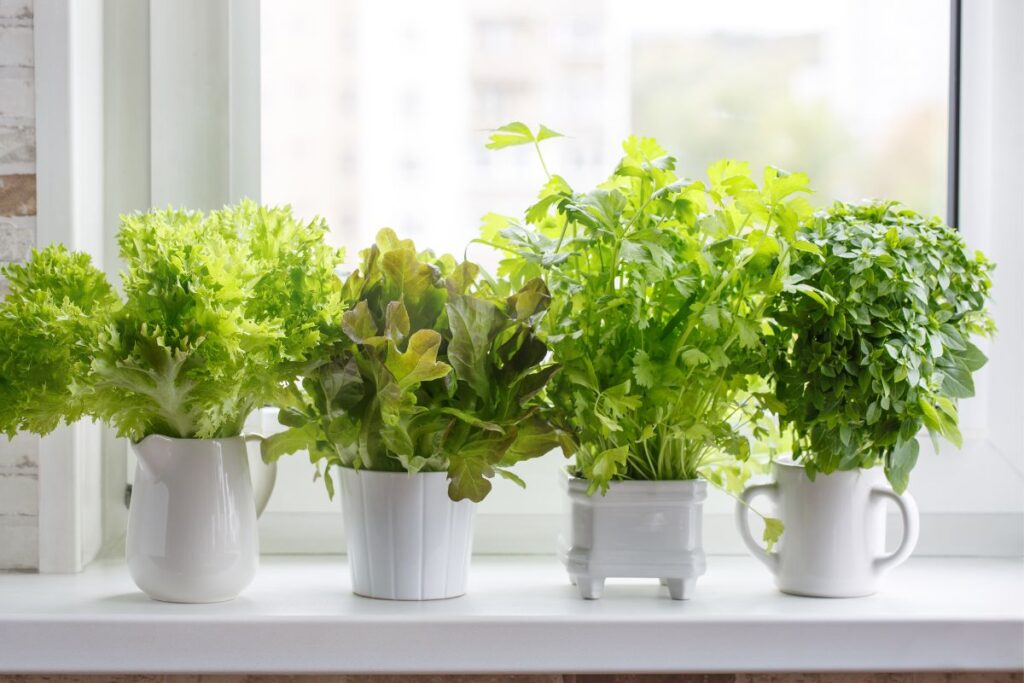
You can prolong the life of store-bought herbs by putting them in water and displaying them in these beautiful green glass bud vases. Soft-stemmed herbs such as parsley, basil and mint will grow roots in a couple of weeks, so you can plant them in pots.

If you have the space, a small metal side table would make a nice focal point filled with potted herbs. With a larger console table, you can emulate the look of my “Plant Table” post by substituting various sized potted herb plants in place of the topiaries and other houseplants, shown below.
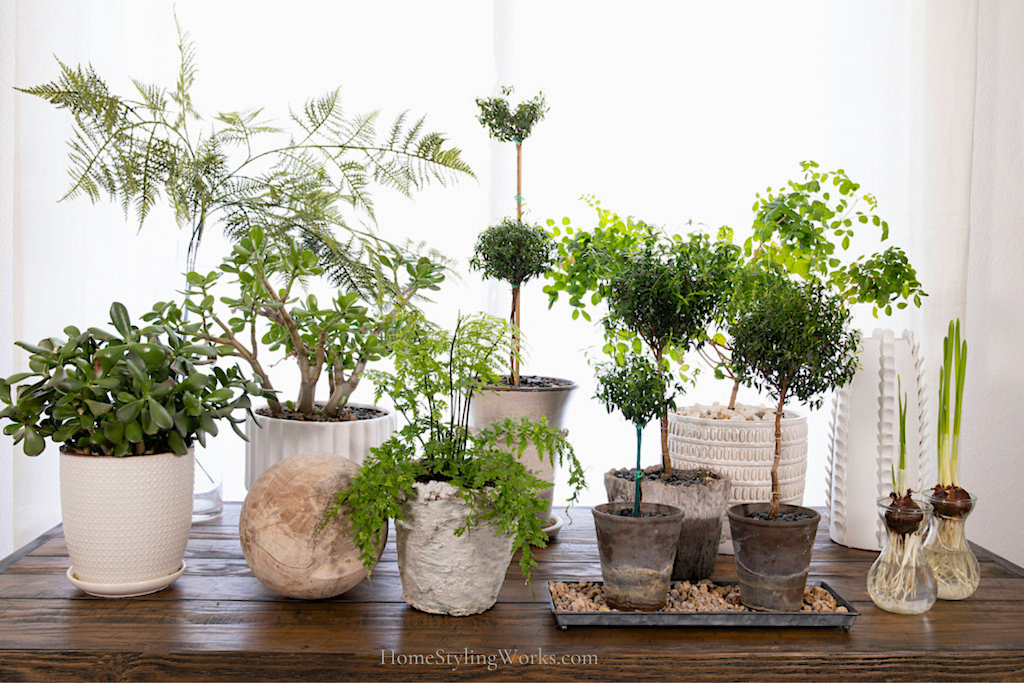
TWO CATEGORIES OF KITCHEN HERBS
Kitchen herbs generally fall into two categories: Soft Stem Herbs and Woody Stem Herbs.
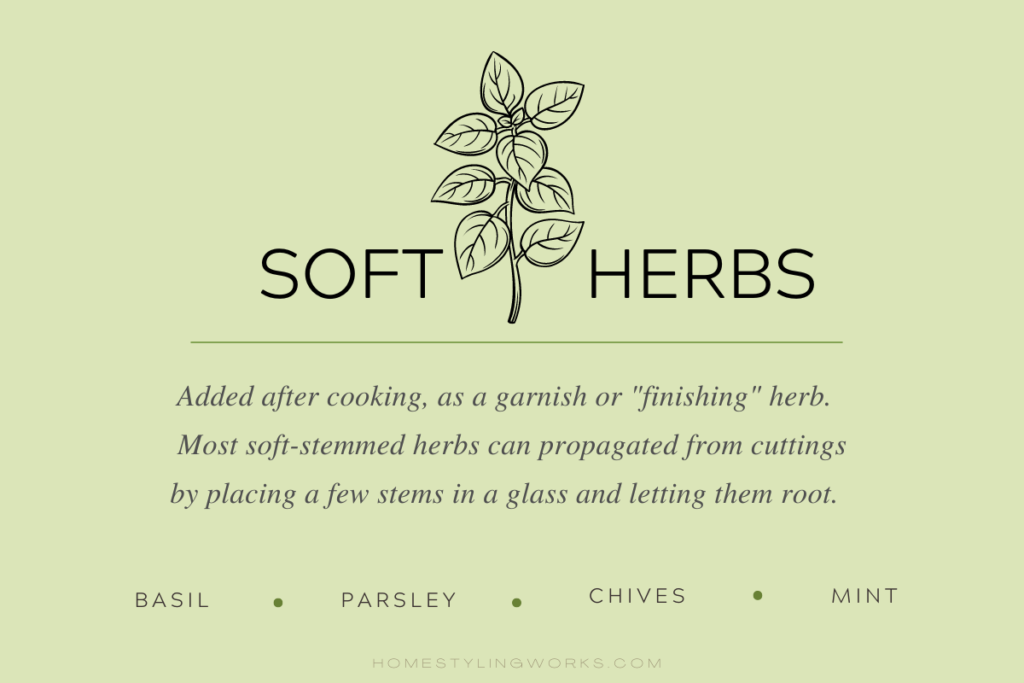
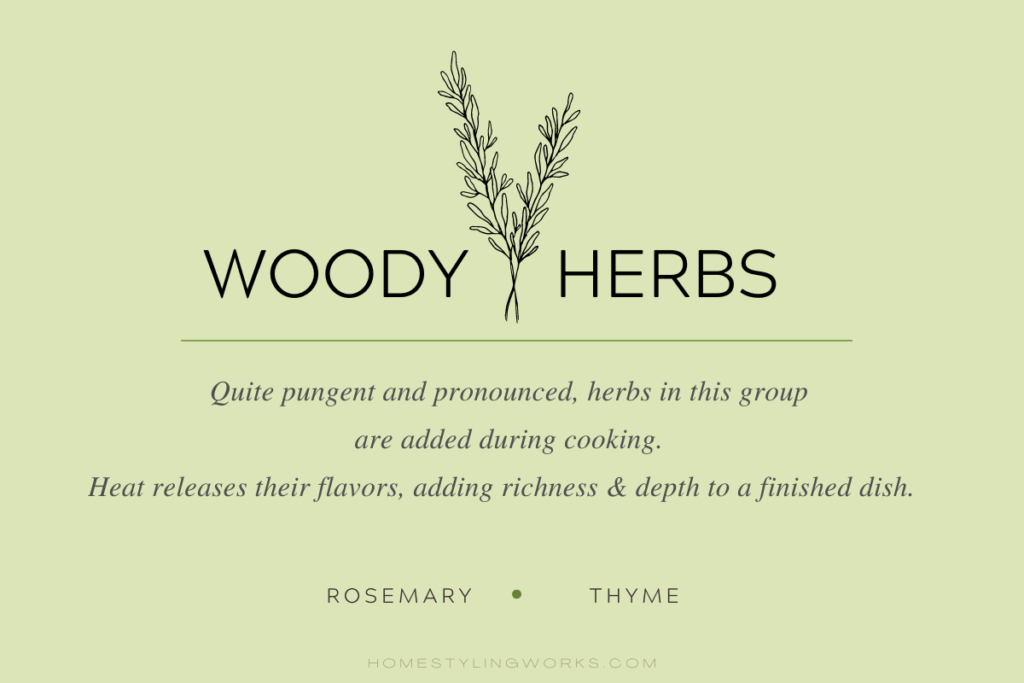
MY SIX FAVORITE KITCHEN HERBS
These are my six go-to herbs that I use year round in my cooking (and food styling): Sweet Basil, Italian Parsley, Mint, Chives, Rosemary and Thyme.
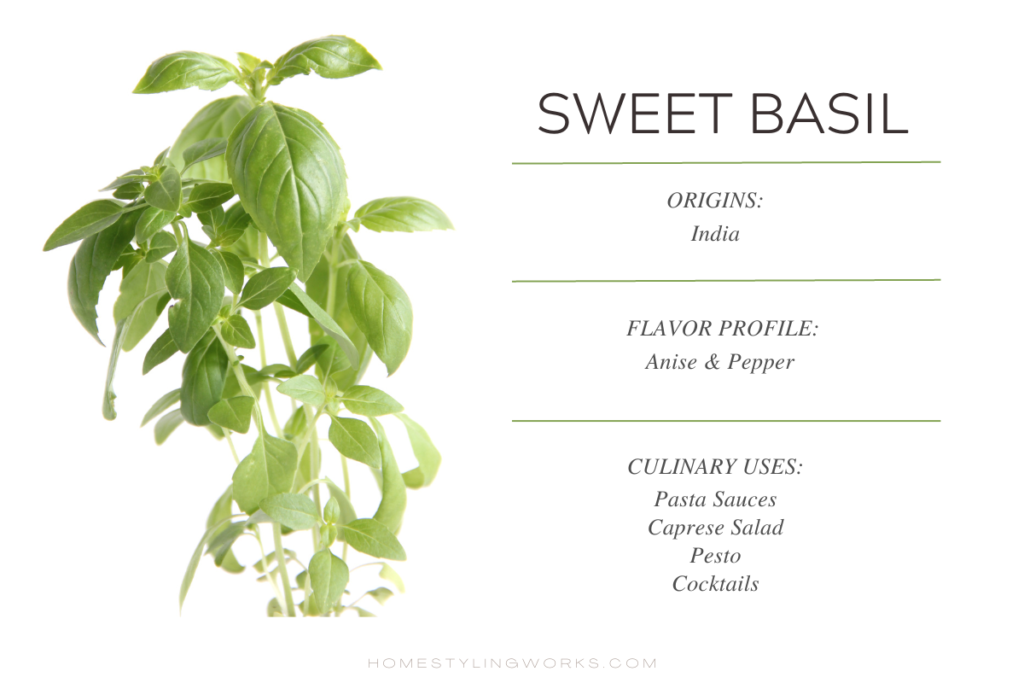
There are roughly 50 types of basil – from variegated to lemon and chocolate. But the most commonly used variety is Sweet Basil, also called Genovese. I consider this a summer staple, and use it at the end of cooking to garnish a pasta sauce. It’s also wonderful in cocktails (and mocktails) using Basil Simple Syrup as a sweet herbal base for Gimlets and Martinis.
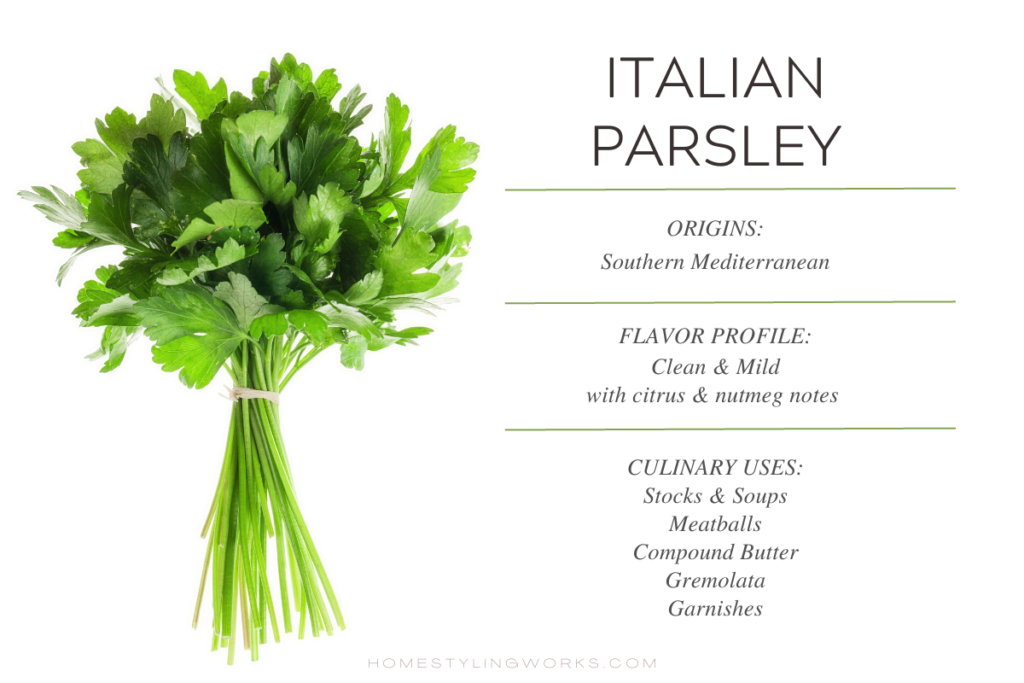
The variety that I use for culinary purposes is Italian (or flat leaf) parsley. Not to be confused with Curly Parsley (that infamous 1970s garnish), which is pretty, but also tasteless. Italian Parsley is a staple in my kitchen, as a supporting player in meatballs and as a main ingredient in gremolata (to brighten long braised meats like Osso Buco).
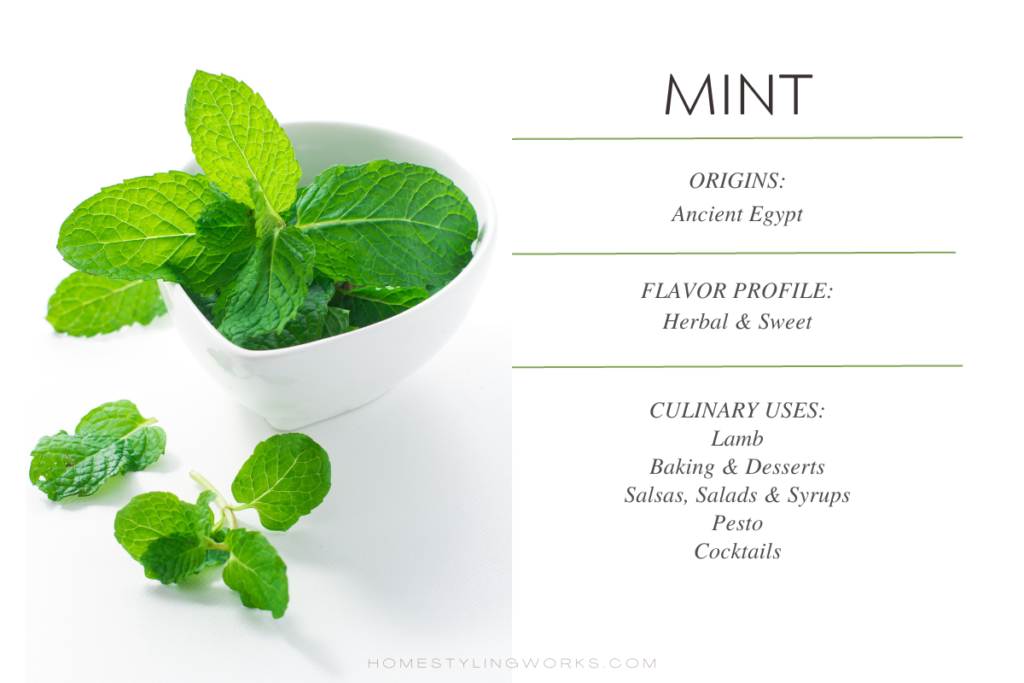
If there’s any herb that should be grown in a pot, it’s mint. The reason is that if you plant it directly into your garden, you will have a mint garden and it will overtake everything else. It’s a little “thug-like” that way. Which is why I keep this herb contained indoors, in a pot, where it won’t take over. There are over 600 varieties of mint, but the most common is spearmint. If you have the space, I recommend adding a fun variety like Chocolate Mint, which makes a lovely garnish for desserts or ice cream.
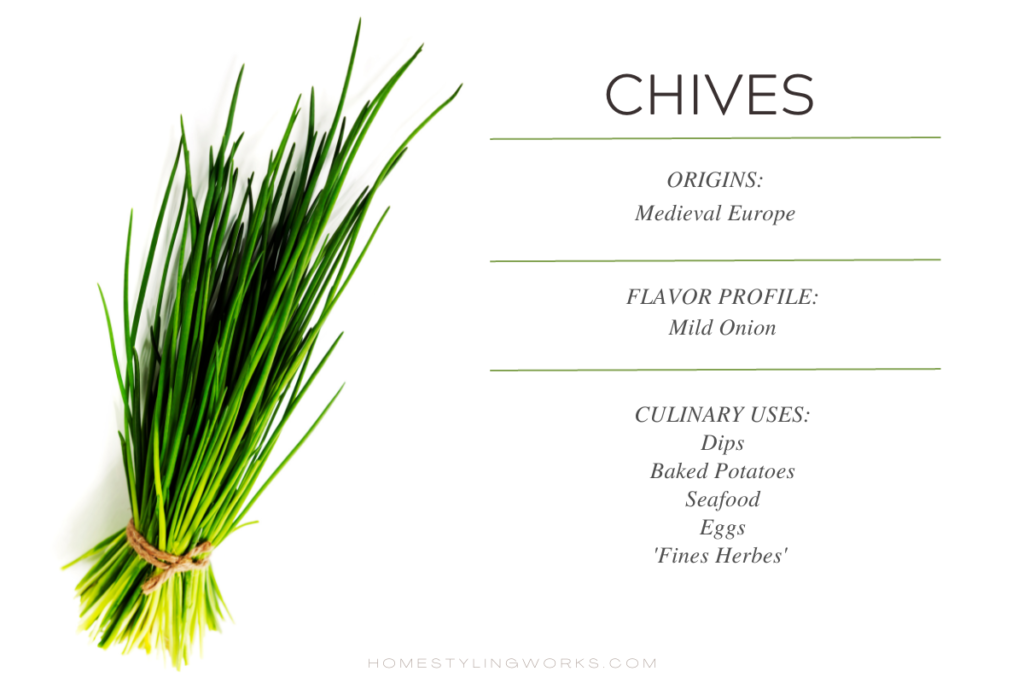
I use chives (and chive flowers) as an addition to salads and vinaigrettes, which adds a subtle onion/garlic flavor. It’s also my favorite garnish on scrambled eggs (or a frittata) and baked potatoes.
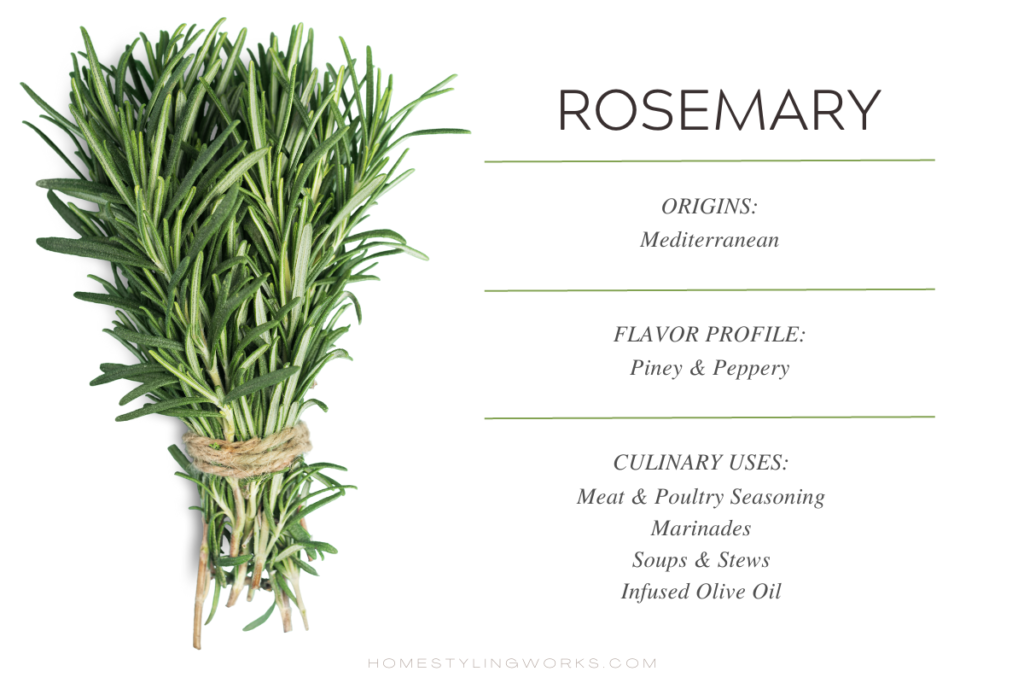
With fresh rosemary, a little goes a long way. This is definitely an herb you add during the cooking process, not after, as its piney aroma can be overpowering. I strip the leaves off the branches and chop the rosemary to add to long braised dishes like Zinfandel Short Ribs, Italian Pot Roast and Citrus Braised Lamb Shanks.
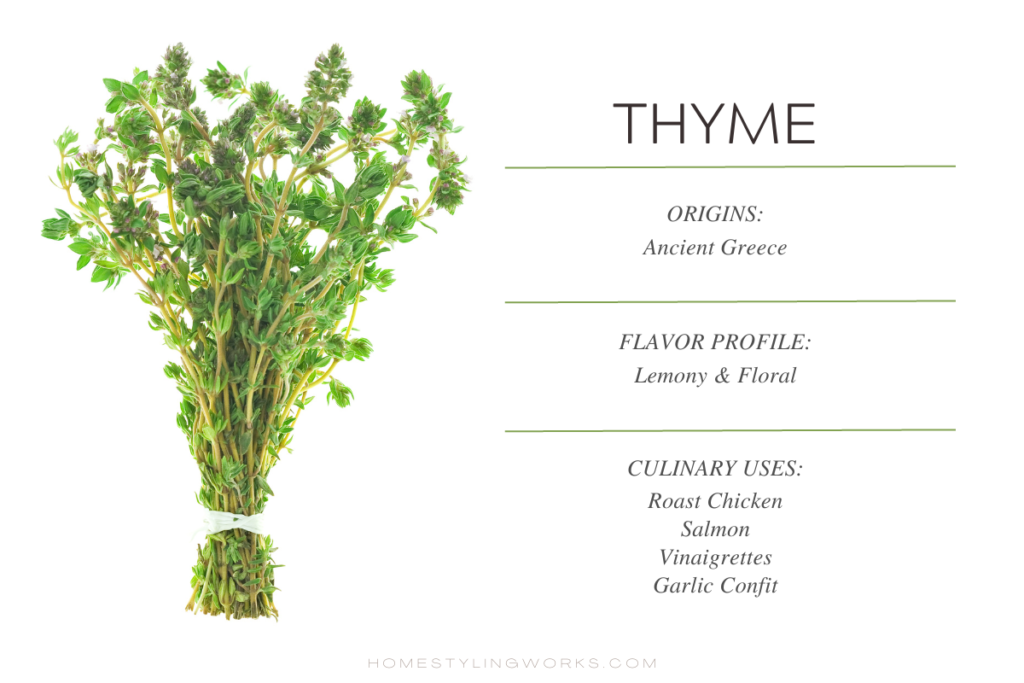
Fresh thyme’s subtle lemony fragrance makes this a wonderful and versatile herb to cook with. I like both the French and English varieties (the English thyme is more pronounced, and has woodier stems than its French counterpart). I use it in poultry and salmon dishes, when I want a add a bright, citrus-y note to a dish. It also pairs nicely with dijon mustard in vinaigrettes and marinades.
FAVORITE RECIPES
Here are a few HomeStylingWorks posts that feature fresh herbs I’ve grown, plus a couple of favorite braising recipes using fresh herbs:
- Pasta with Salsa Cruda & Burrata Cheese (fresh basil)
- Garlic Confit (fresh thyme)
- A Beautiful Charcuterie Board (fresh herbs as a garnish)
- Citrus Braised Lamb Shanks (fresh thyme or rosemary)
- Balthazar’s Braised Beef Short Ribs (fresh thyme & rosemary)
FOOD STYLING TIP
When I’m styling food for photo shoots, I use the predominant herb as a garnish to finish off the dish. For example, when shooting the Thomas Keller Roast Chicken, which is stuffed with thyme and lemon before cooking, I added fresh sprigs of thyme to the finished dish.

Another food styling tip is to use fresh herbs as an accent on uncooked dishes. See image below from my charcuterie board post, where I added clipped rosemary, chives with buds and a bay leaf branch. The pop of green adds a lovely finishing touch to a simple charcuterie platter.

CREATING YOUR KITCHEN HERB GARDEN
Below are links to shop for herb plants (or, if you’re ambitious, seeds), plus a variety of planters and a handy beginner’s guide to growing and cooking with herbs.
HAPPY GROWING!
I hope that this post has inspired you to create a little herb garden in your kitchen that you can use year-round!
